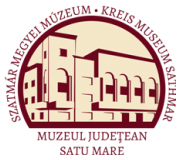Rusu, Adrian Andrei - Szőcs Péter Levente: Arhitectura religioasă medievală din Transilvania 4. (Satu Mare, 2007)
Obiective / Esettanulmányok / Case Studies - Florin Mărginean: Biserica romanicăa de la Tauţ
Florin MÂRGINEAN 106 in the 12'h century, the existence of an earlier cemetery was detected here. This cemetery continued to function after the church was built and was extended inside and around the church. The first building was built in Romanesque style and it was later enlarged. The first Gothic church was placed on the ruins of the Romanesque building, incorporating only the nave of the former church. This study deals with the phases of the first church erected here, the parish church of the medieval settlement of Feltót (Tot, Tol), today Tauf. The building is a hall church with unhook, semicircular apses, and a southern entrance, half uncovered with two exterior withdrawals. On the northern wall, the remains of two niches were discovered, another one being discovered between the southeastern shoulder and the entrance. The church is 19,5 m long and 9,5 m wide. The remains of the foundation are lm in width at the apse and 0,80 m at the nave. It was made of rectangular bricks, placed in six horizontal lines in the case of the apses and five lines in the case of the nave. Among the mortar fragments, pieces offresco belonging to the first phase of the church were discovered. The biggest part of the fresco was painted with ochre and white with little gray and blue. Sometimes three or four colors can also be seen. These fragments belonging to the first church were probably painted during the 13th century. A triumphal arch was build between the nave and the choir, sustained on the exterior by two buttresses made of stone and mortar. In the last phase of the Romanesque church, a sacristy was built on the northern side, along with a space prolonged up until the western side. The form of the apse dates the church back to the 13th century. Based on analogies, the church, together with the later adding’s, can be dated between the 13th and the 14th centuries. (Translated by Anca Ni(oi) Fig. 1.
